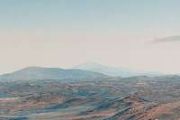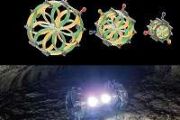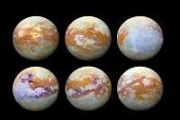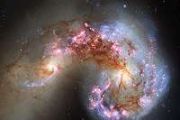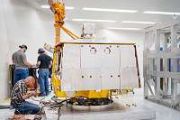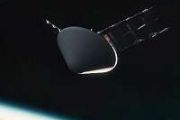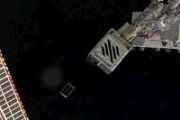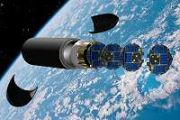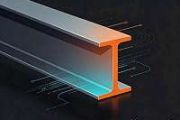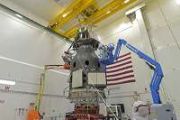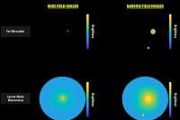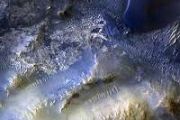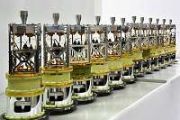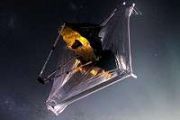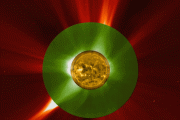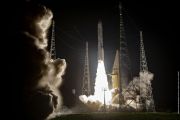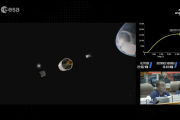
Copernical Team
BlackSky Secures Strategic International Contract for Subscription-Based Gen-2 Imagery Services
 BlackSky Technology Inc. (NYSE: BKSY) has secured a six-figure contract with a new strategic international client to provide subscription-based on-demand Gen-2 imagery and analytics services. As part of the agreement, BlackSky will also deliver comprehensive analyst training on its AI-driven BlackSky Spectra multi-intelligence tasking and analytics platform. The training will focus on the applic
BlackSky Technology Inc. (NYSE: BKSY) has secured a six-figure contract with a new strategic international client to provide subscription-based on-demand Gen-2 imagery and analytics services. As part of the agreement, BlackSky will also deliver comprehensive analyst training on its AI-driven BlackSky Spectra multi-intelligence tasking and analytics platform. The training will focus on the applic Kapta Space debuts metamaterials radar system for defense and earth observation
 Kapta Space a Seattle-based space technology firm has emerged from stealth mode with a fresh 5 million seed round to drive the development of its breakthrough radar imaging system. The funding round was led by MetaVC Partners and joined by Entrada Ventures and Blue Collective and will support rapid on-orbit demonstrations.
Established in 2023 by Milton Perque formerly of Echodyne and Adam
Kapta Space a Seattle-based space technology firm has emerged from stealth mode with a fresh 5 million seed round to drive the development of its breakthrough radar imaging system. The funding round was led by MetaVC Partners and joined by Entrada Ventures and Blue Collective and will support rapid on-orbit demonstrations.
Established in 2023 by Milton Perque formerly of Echodyne and Adam Foreign Military Sales Conference Ushers in New Era for Space Systems Command
 In anticipation of what some in the defense industry are calling a "tidal wave" of new foreign military sales cases, Space Systems Command hosted a first-ever Foreign Military Sales (FMS) Enterprise Kick-Off conference Wednesday, Feb. 12, 2025.
"Today, SSC is taking another step towards our vision for an FMS enterprise that successfully executes space FMS cases and effectively delivers cap
In anticipation of what some in the defense industry are calling a "tidal wave" of new foreign military sales cases, Space Systems Command hosted a first-ever Foreign Military Sales (FMS) Enterprise Kick-Off conference Wednesday, Feb. 12, 2025.
"Today, SSC is taking another step towards our vision for an FMS enterprise that successfully executes space FMS cases and effectively delivers cap Deep Space advanced radar capability makes tremendous progress in first year
 Just one year after signing a ground-breaking trilateral agreement, the Deep Space Advanced Radar Capability partnership is completing facilities construction at the first of three sites that will host a global network of advanced ground-based sensors.
DARC is a partnership between the United States, the United Kingdom, and Australia, designed to create an all-weather, global system to tra
Just one year after signing a ground-breaking trilateral agreement, the Deep Space Advanced Radar Capability partnership is completing facilities construction at the first of three sites that will host a global network of advanced ground-based sensors.
DARC is a partnership between the United States, the United Kingdom, and Australia, designed to create an all-weather, global system to tra Moon-Exposed Grass Seeds to Be Cultivated on Earth
 Herders in Xinjiang Uygur autonomous region may soon have access to a unique variety of forage, as researchers are set to cultivate grass seeds that have undergone a journey to the moon. These seeds, having endured deep-space exposure, are expected to undergo genetic mutations that could yield superior plant varieties.
Carried aboard China's Chang'e 6 lunar probe, which embarked on its mis
Herders in Xinjiang Uygur autonomous region may soon have access to a unique variety of forage, as researchers are set to cultivate grass seeds that have undergone a journey to the moon. These seeds, having endured deep-space exposure, are expected to undergo genetic mutations that could yield superior plant varieties.
Carried aboard China's Chang'e 6 lunar probe, which embarked on its mis New evidence suggests gypsum deposits on Mars may hold signs of ancient life
 A research collaboration between the University of Bern and the University of Science and Technology Houari Boumediene in Algeria has yielded significant progress in astrobiology. Their recent study demonstrates the successful detection of fossil microorganisms in Messinian gypsum deposits in Algeria using the Bernese Laser Ionization Mass Spectrometer (LIMS). The findings suggest that LIMS coul
A research collaboration between the University of Bern and the University of Science and Technology Houari Boumediene in Algeria has yielded significant progress in astrobiology. Their recent study demonstrates the successful detection of fossil microorganisms in Messinian gypsum deposits in Algeria using the Bernese Laser Ionization Mass Spectrometer (LIMS). The findings suggest that LIMS coul SpaceX targeting Friday for next test of Starship megarocket
 Elon Musk's SpaceX is preparing for the next test flight of its Starship megarocket on Friday, following a dramatic mid-air explosion over the Caribbean during its last trial.
A launch window from the company's Starbase facility in Boca Chica, Texas, opens at 5:30 PM (2330 GMT), pending regulatory approval.
It will mark the eighth test flight of Starship, the largest and most powerful ro
Elon Musk's SpaceX is preparing for the next test flight of its Starship megarocket on Friday, following a dramatic mid-air explosion over the Caribbean during its last trial.
A launch window from the company's Starbase facility in Boca Chica, Texas, opens at 5:30 PM (2330 GMT), pending regulatory approval.
It will mark the eighth test flight of Starship, the largest and most powerful ro Asteroid 2024 YR4 no longer poses significant impact risk
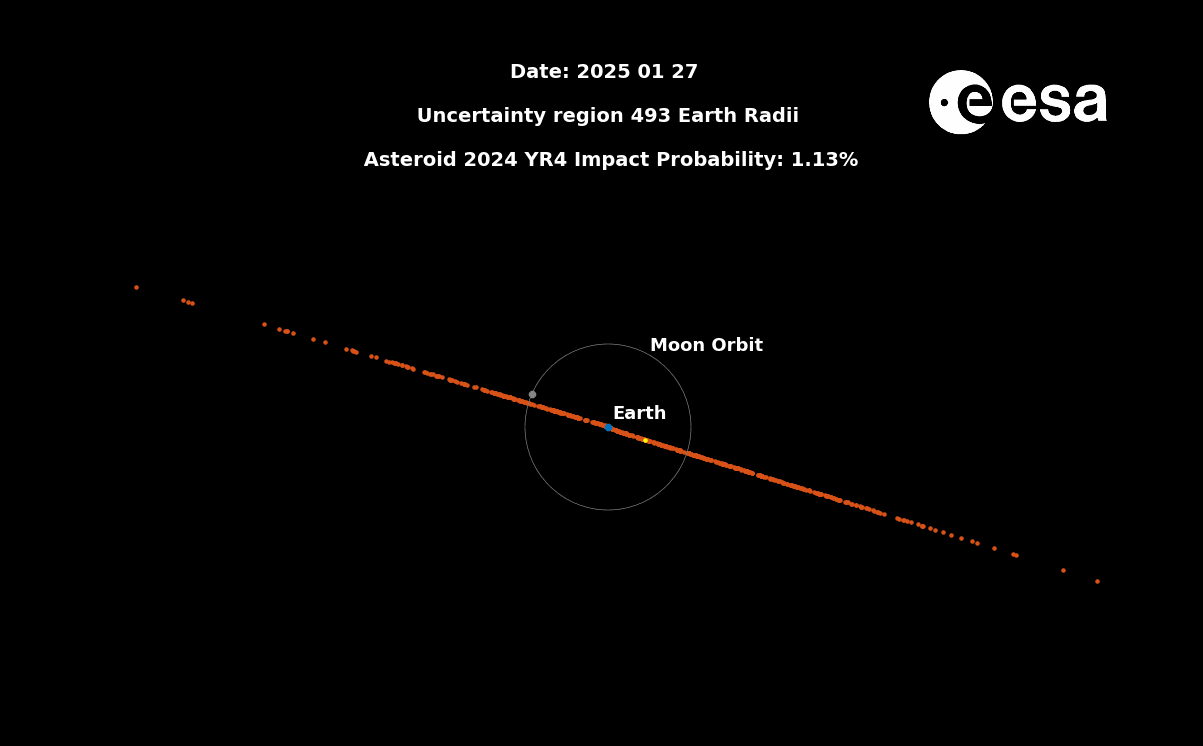
The latest analysis from the European Space Agency (ESA) Planetary Defence Office has reduced the probability that asteroid 2024 YR4 might impact Earth in 2032 to 0.001%.
Have we been wrong about why Mars is red?

The Red Planet’s iconic rusty dust has a much wetter history than previously assumed, find scientists combining European Space Agency (ESA) and NASA spacecraft data with new laboratory experiments on replica Mars dust. The results suggest that Mars rusted early in the planet’s ancient past, when liquid water was more widespread.
New Satellite Terminal Aims To Bridge Global Connectivity Gap
 Researchers at Heriot-Watt University have secured approval to initiate an innovative project designed to deliver affordable connectivity to everyone. A consortium of agencies that includes Heriot-Watt has been allocated GBP6 million through the UK Space Agency's Connectivity in Low Earth Orbit (C-LEO) programme. Under the leadership of Cardiff-based tech firm Excelerate Technology Ltd, the team
Researchers at Heriot-Watt University have secured approval to initiate an innovative project designed to deliver affordable connectivity to everyone. A consortium of agencies that includes Heriot-Watt has been allocated GBP6 million through the UK Space Agency's Connectivity in Low Earth Orbit (C-LEO) programme. Under the leadership of Cardiff-based tech firm Excelerate Technology Ltd, the team 

